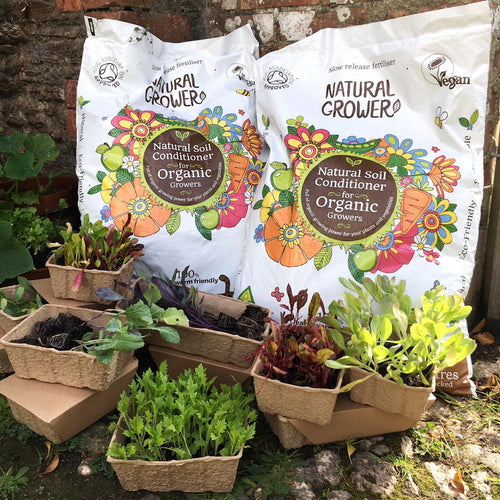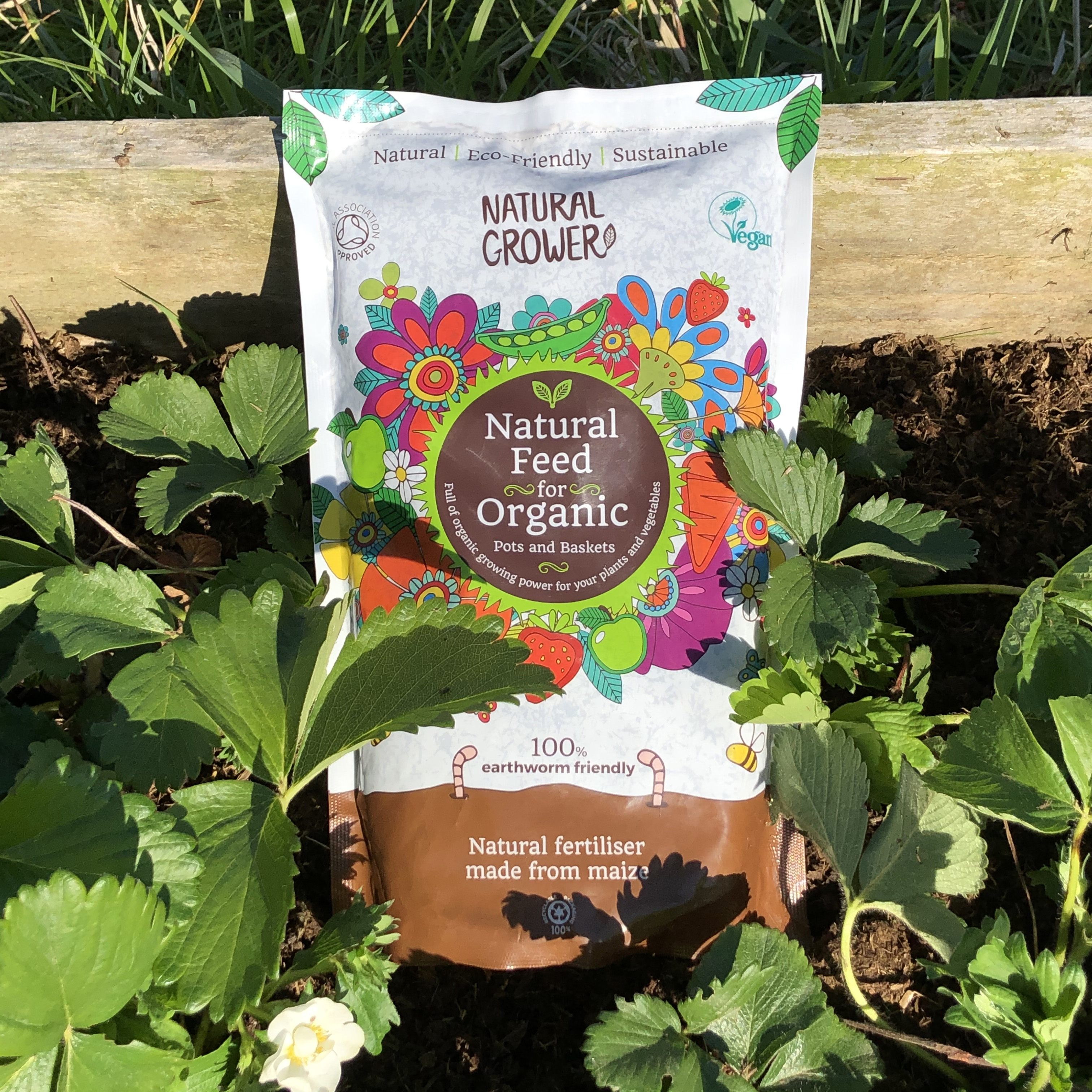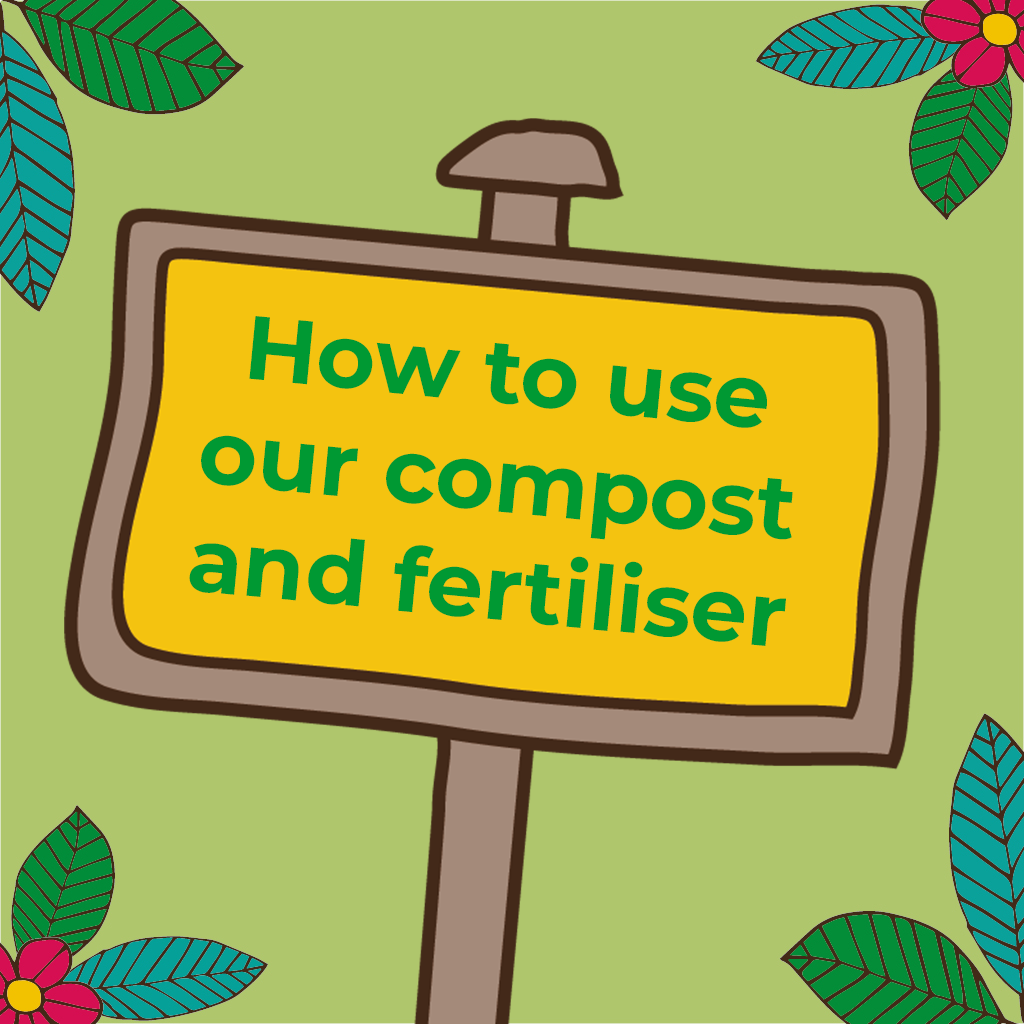
This is a guest post from our friends at Rocket Gardens, a lovely company based in Cornwall that sell Organic Plug Plants for kitchen gardens – they have a wide range of different vegetable plants, herb plants, companions and edible flowers and soft fruit.
It is surprisingly straightforward to keep your plot going all year round by planting three times a year. Below, we look at each of the three planting windows, together with a few key tasks that you can do keep all your crops growing well throughout the different seasons.
Spring Planting Window (Late April to Early June)
This is the time to get the majority of your vegetable plants in the ground. Most will be harvested later in the summer or early autumn (like salads, leaves, fruiting veg like tomatoes and aubergines, and beans and peas). Others (like parsnips, celeriac and leeks) will keep growing into the following winter, but are best planted now.
- Summer Salads & Leaves: Lettuce, Spinach, Chard, Wild Rocket
- Cucurbits: Courgette, Cucumber, Squash & Pumpkins
- Fruiting Veg: Tomatoes, Aubergine, Peppers & Chillies, Sweetcorn
- Bulbs: Leeks, Onions, Fennel
- Roots: Potatoes, Parsnips, Celeriac, Beetroot, Carrot
- Legumes: Peas, Beans,
- Brassicas: Cabbages, Broccoli, Cauliflower, Kale

When you plant up in early spring, be aware of the fickle weather. Hail, frost, strong winds and heavy rain can all be stressful for young, vulnerable plants. Choose a sheltered site that is out of the wind if you can. Try to have some cloche tunnels or some horticultural fleece at hand to protect them in those first few days spent outside, especially if chilly nights are on the forecast. Be sure to make sure beds and pots have good drainage – if you are growing in the ground, you can plant in ridged mounds of soil to help with drainage. Raised beds and pots are a little easier – just make sure they are filled with good quality, organic compost.
Once your spring planting is done, the main things to be aware of are slugs & snails as they can quickly destroy a whole row of newly planted seedlings (beer traps are great, and keeping a tidy plot with as few slug-friendly hiding places is key), and pigeons which can strip brassica beds in a single morning (mesh netting is great for protecting brassicas). You will also need to water thoroughly on a regular basis – it is much better to give a thorough watering two or three times a week than a light watering every day. This is because it encourages the young plants to put their roots down deep which will be a huge benefit when it comes to the heat of the summer and the plants can still access water from deep within the soil.
Summer Planting Window (Late June to Early August)
At this time of year, there is an opportunity to plant many veggies as a second crop that will harvest a little later than those that were planted in spring. For example, you could plant more carrots and beetroots that will be harvested in late autumn, a second helping of lettuces or some extra leeks or kale to be harvested during the winter or early the following spring. It’s a great way of making sure you still have plenty to harvest during the colder months.
-
Salads & Lettuces
- Beetroot, Carrot, Turnips, Swede
- Cabbage, Cauliflower, Broccoli, Kale
- Leeks, Spring Onions

With summer planting, the two main things to be aware of are drought conditions and cabbage white butterflies which are particularly active in the egg-laying department. In terms of drought, we’d really recommend mulching to try and protect the soil. Again, watering thoroughly and deeply is a good way forward, and it is well worth watering in the early mornings if you can while the soil is cool and can better soak up the moisture before it evaporates off. Dry soil, whilst helpful in keeping slug damage to a minimum, can encourage other pest activity, like flea beetles which eat tiny holes in brassicas and mustard leaves. A mulch will help, and Natural Grower Soil Conditioner is a good mulch to use.
Butterflies laying eggs on brassicas can lead to full on caterpillar situations. Prevention is the best method of approach, so be sure to cover brassicas with a mesh net when you plant them out. You’ll still be able to water the plants through the net, but the mesh will help to keep butterflies out, as well as birds, and it tends not to be as trapping as other nets.
Autumn (September to Mid October)
There aren’t as many veggies to plant now, but there is still a fairly wide range of leaves and a few other hardy crops that you can plant to grow over winter. Planting up these hardy veggies is a great idea as it will give you a more-or-less continual supply of healthy greens over the winter months and on into early spring.
Remember, you will also have plenty of other crops growing from earlier spring and summer plantings, like parsnips, celeriac, sprouts, cabbages and leeks. You can expect to harvest these in winter as well, so following this planting plan will work well to keep your plot productive right through until spring.
- Winter Lettuces & Salad Leaves– Land Cress, Wild Rocket, Purslane, Lamb’s Lettuce
- Oriental Leaves– Tatsoi, Pak Choi, Mustard Leaves
- Leafy Greens: Spinach, Chard, Kale (these will follow on from those planted earlier)
- Cabbage Greens: Winter Green Cabbage, Spring Green Cabbage
- Spring Onions
- Brassicas: Broccoli, Turnip & Swede
For autumn planting, you probably won’t need to worry so much about watering, but try to keep on top of weeds and remember that slugs will be very active. You may also find that some fungal diseases are more common at this time of year with the weather still being warm but damp – to this end, the healthier your soil the better, and be careful with plant spacing. Don’t try to cram everything in, follow the plant spacings (a grow guide comes with our plug plants) so that the plants have enough air circulating around them to fend off the worst of the fungal diseases.
Brassicas will still need to be netted, and when the weather turns cold you may need to be prepared with horticultural fleece and cloche tunnels if you’re in a frost pocket or often get snow. If you can plant in a greenhouse or polytunnel at this time of year, you’ll probably get an excellent supply of winter greens.
grow your own, Organic Veg, Spring Vegetables, Vegetable Garden








